
R. SRINIVASAN
Executive Vice President & Head, Smart World & Communication
Our Smart World business, since inception has been operating, in most cases, in unchartered territories with no precedence or pre-set benchmarks both domestically and Internationally to fall back on.
The business solutions include use cases to enable and ultimately improve the quality of life of citizens. The whole business involves citizen centric solutions in crowded urban environments with very limited timeframes. These compulsions make operational excellence a prerogative part of all our projects.
In some of our projects, the eco system we address involves several initiatives to build broad consensus with citizens and corporations for effective understanding and delivery, which is usually not part of our regular EPC projects. Each of our project solution is unique and customised to meet the distinct challenge faced, including several innovative and customised solutions, most cost-effectively.
Being first-of-their-kind solutions in many projects, bringing the right software and integrating them on a single interface
has always been an amazing challenge, and our Technology team, carved out with talent from across the world, has always raised to the occasion to deliver.
We have delivered in our short journey of 4 years, the country’s largest surveillance network in Mumbai, smart solutions
to monitor crowds of over 25 Crore people, at the world’s largest religious gathering for the Kumbh Mela in Prayagraj, an automated system to usher in a cop less culture in Hyderabad, an Early Warning Dissemination System (EWDS) in Odisha to have practically zero incident during cyclones, digitally connected 6000 schools across Tamil Nadu including managing content, digitized smart meters in 17 districts in the states of Uttar Pradesh, Haryana and New Delhi, and have in the process successfully emerged as a Master System Integrator with multiple domain expertise as a first mover.
Several of our projects are like an open-heart surgery, working in the midst of bustling cities, where creating work fronts
have always been a challenge with the added pressure of a limited time window. We have had to work pro-actively with
utmost safety and quality procedures and in several cases, work only at nights, to achieve our targets.
At our Technology Innovation Centre (TIC) at Chennai, all the project solutions are first tested in our own campus, which is another unique way of achieving operational excellence. In Smart Cities, proactive positioning is critical for success and through our TIC, we can identify various solutions to problems of cities and showcase them to our stakeholders how quality of life can improve through digital interventions. This positions us better than most other System Integrators.
We have implemented various digital solutions internally and the solution – SWIFT stands out, with which the entire procurement process end-toend has become online and approvals are happening at 25% better time efficiency.
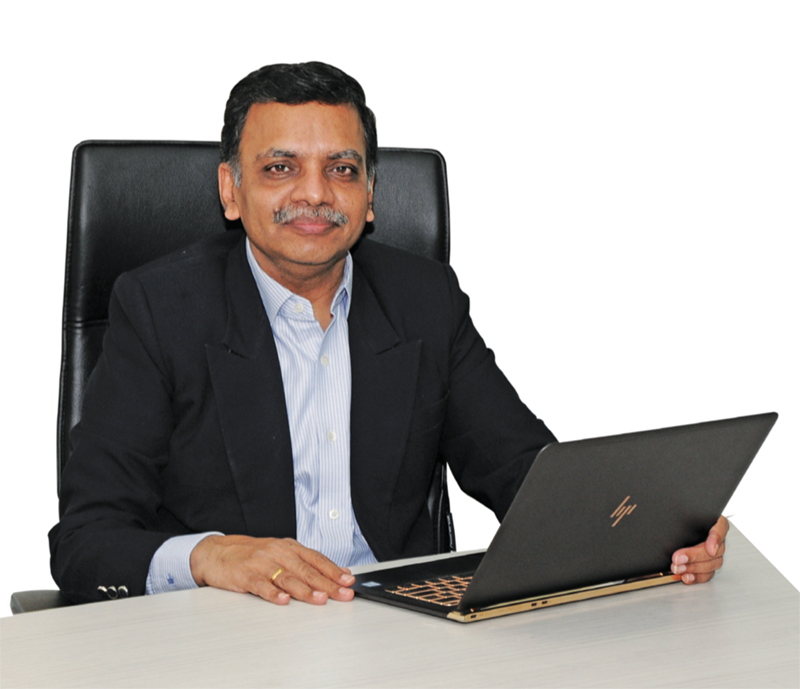
I am also happy to share that L&T Fusion, a smart solution platform, under development by our in-house team, was recently utilized in Telangana for crowd management of 1.5 Crore people at the Medram Jatara as a POC. L&T Fusion will take us a long way to develop better and smart solutions and create value propositions.
As we move forward, we will continue our journey of Customer First Approach with innovation, advanced solutions, pro-active planning and remain focused to deliver by continuously re-writing the rules of the game.
A TALE OF TWO EFFICIENT SMART PROJECTS
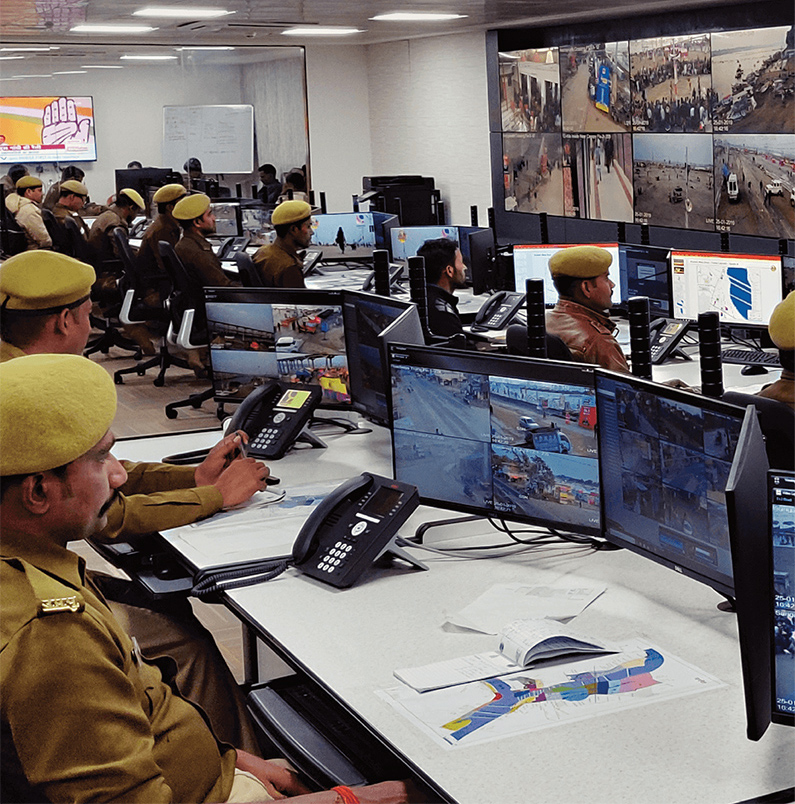
For a business that has been a trailblazer in setting up smart infrastructure across the country, L&T’s Smart World & Communication (SWC) has been raising the bar and defining the way with first-of-its-kind projects in India. “An operation excellence charter gives us insights but largely smart projects have a lot of on-field customization which we have been successful in achieving, all thanks to our domain expertise as a Master System Integrator,” highlights R. Srinivasan, Executive Vice President & Head, Smart World & Communication.
In recent times, Phase 1 of two mega projects were delivered by the business within a short period of time: one that safely managed the world’s largest gathering of people for the Kumbh Mela while the other involved the installation and digitalization of smart meters in 54 cities across Uttar Pradesh, Haryana and New Delhi. In terms of scale and execution, both projects were unique and called for some innovative operational strategies to achieve various challenging milestones.
MAKING PRAYAGRAJ KUMBH READY
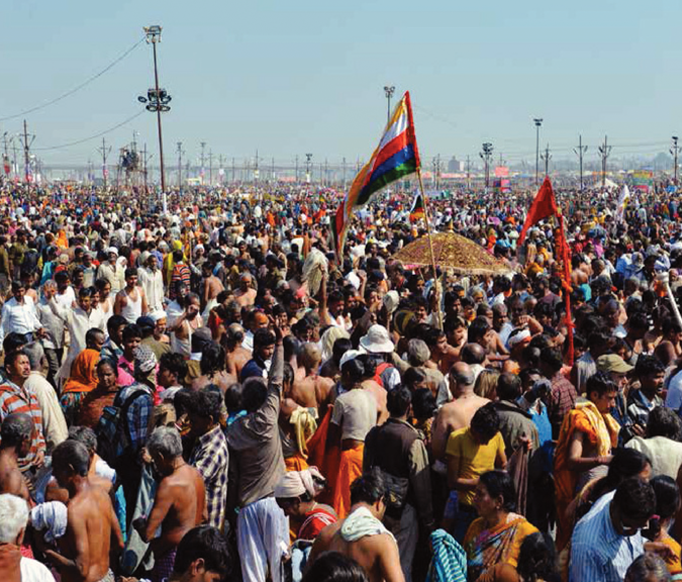
Value additions make the vital difference
How do you go about a project the sole objective of which was to effectively manage more than 25 crore people at the world’s largest spiritual congregation? You need ideas and plans, lots of them, to figure out out-of-the-box approaches. That’s what the SWC team at Prayagraj achieved. While a lot has already been spoken about the Prayagraj smart infrastructure project, Jigesh Dubey, Project Manager and his team proudly share some hard-core L&T project management techniques that went a long way to deliver the tough project.
“At the Kumbh Mela, our mandate was to implement the project in three stages involving first, the setting up of smart infrastructure for the Kumbh area, taking up remaining works after the mega event and finally ensuring smart governance of Prayagraj,” shares Jignesh. The overall project timeline was approximately 5 months but with the client finalizing the locations for Kumbh area only after the monsoon, the timeline for the first milestone was crashed to 3 months. “It was like a project within a project,” exclaims Jignesh.
“An operation excellence charter gives us insights but largely smart projects have a lot of on-field customization which we have been successful in achieving, all thanks to our domain expertise as a Master System Integrator.”
R. Srinivasan
Executive Vice President & Head,
Smart World & Communication
Setting up the Prayagraj Command & Control Centre
As Prayagraj Smart City combined the Kumbh Mela operations along with smart city infrastructure development works, one of the first priorities for the project team was to establish a state-of-the-art command & control centre to monitor the massive gatherings. However, the task was a race against time having to roll out in just 5.5 months against the normal time frame of 6 to 9 months. The challenges involved multi-agency coordination, substantial work on the streets especially in conjunction with other development tasks, establishing connectivity and finally sensor integration to the command centre.
“Successful convergence of cyberphysical infrastructure is important for all smart city projects, here the case more pressing considering the timelines. We adopted our proprietary Smart City Agile Development Methodology, L&T-SCAD, for parallel execution of digital and physical solutions,” highlights Jignesh. “Within a record-time of 3 months, one large command & control centre and a data centre were made operational to cater to the needs of the Kumbh Authority, City Govt. Authorities and the police.” While the L&T-SCAD strategy gave the much-needed edge, the project team initiated a series of process enhancements to fast track execution across fronts. “We Identified and trained operators during project execution to document the process with help of multi-agency coordination, leveraged reusable and proven smart city solution architecture and detailed design to avoid last minute integration challenges, streamlined approvals for resource mobilization, organized daily and weekly stake holder consultation to resolve minor and major issues, formed a dedicated task force team to accelerate and customize material procurement for just-in-time delivery of materials.”
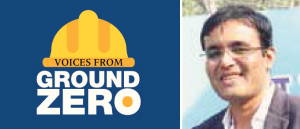
“At the Kumbh Mela, our mandate was to implement the project in three stages involving first, the setting up of smart infrastructure for the Kumbh area, taking up remaining works after the mega event and finally ensuring smart governance.”
Jigesh Dubey
Project Manager
Understanding the dynamics
As working out the infrastructure around the Kumbh area was unique, to evolve practical solutions especially for activities that included power setup and other associated works, the team roped in local past masters who were well aware of the nitty gritty. And, it was quite a number, even if for a temporary set up as it included some 450 poles and an equal number of UPS, fibre cable laying and installing 20 variable message displays, lining up all these elements even in the fastest mode would have normally taken around 4 months. Team SWC however achieved the setup in just a month’s time.
Ploy for poles
A strategy to source the CCTV poles was critical as the OEM had a minimum delivery timeline of 2 months which the project couldn’t afford. A dedicated team was deputed to directly oversee the production and quality at the OEM’s factory that conveyed the urgency; parallelly some quantities were drawn from the orders of other projects. “This was more of an internal understanding and it worked well as the momentum was critical for the Kumbh event.”
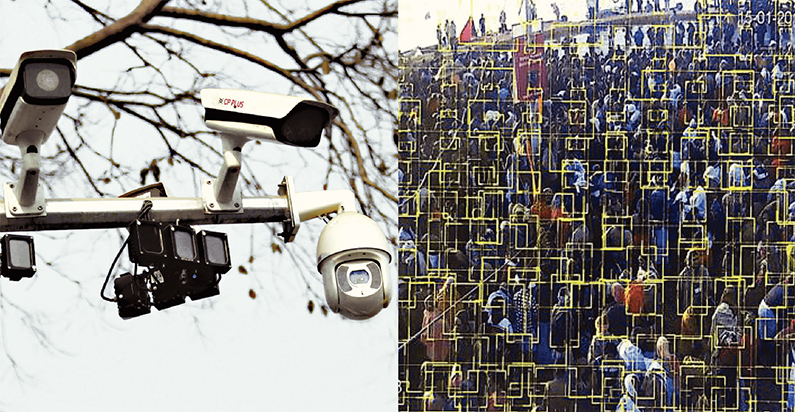
Crowd density estimation at strategic locations
Precast lifting tackle
Almost every project site across L&T has a precast success story and Prayagraj is no different. “The CCTV poles weighed close to 4 to 5 tonnes with an average height of 2.5 m,” informs Jignesh. “Definitely not an easy piece to shift along the banks where the wind speed was a major factor. We came up with a timely precast lifting tackle innovation that ensured that the job was done with utmost safety with considerable savings in time and cost.” By precasting, removing them after the Kumbh event was a whole lot easier.
Gaining insights with crowd management
Arriving at a world-class AI-driven solution for crowd management needed a lot of study, remarks Jignesh. “We went through pre-recorded videos of such events and took the help of professors from the Motilal Nehru National Institute of Technology who were already doing research on crowd modeling to enable us deliver the solution as per customer requirement.” None of us at L&T had any idea about the outcome of such an event, exclaims the Planning Engineer. “The first congregation on 15th January 2019 was an experience to see around 2 crore people gather,” he adds. “Our AI was 75% tuned and from the insights gained it gradually evolved as a comprehensive platform.” Further, for every team member, the congregations were testing times as it ensured a 36-hour monitoring shift with 12 different teams zoning across various locations.
Shifting gears
A whopping 90 km of underground cabling to be completed in just 3 months was a tough ask, mentions Jignesh. “The only way we could gain ground was through overhead cabling which was not the norm but typical of L&T’s innovative thinking, we initiated a proposal for a dark fibre set up and convinced the client to opt for it.” Though it was at an additional effort, Jignesh affirms that it was well worth in terms of catching up with the critical timelines as they were able to create the backbone for the smart infrastructure across the Kumbh area.
Banking on inherent strengths
Capex resources were extensively used to achieve the various milestones with in-house teams addressing the commissioning of the command and control centres to bring substantial savings. “Wherever possible, other smart city project team members were sourced temporarily, including CSTI trainees, and we had a separate O&M team for service level agreement management while the local team was deployed for field O&M activities.” With a zero-incident record, team SW&C has not only delivered a project of huge stature but, in the course, enhanced its inherent strengths with every team member gaining invaluable insights.
MAKING 5 MILLION HOUSEHOLDS ENERGY EFFICIENT
Engineering Advanced Metering Infrastructure
Advanced Metering Infrastructure (AMI), an offshoot of Smart Grid infrastructure, is all set to transform the management of the electricity ecosystem across the country with the Ministry of Power fast-tracking the installation of smart meters. L&T’s SWC business was entrusted the task of installing more than 5 million smart meters in 54 cities across Uttar Pradesh, Haryana and New Delhi.
Strategizing solutions for India’s largest smart meter roll-out
Being a first-time implementation of the AMI solution on such a massive scale in the country, challenges were inevitable to meet the speed of smart meter installation and devise scalable and reliable solutions for the load envisaged. Since chosen domain applications were not pre-tested for this scale especially in multi-meter vendor environment and concurrency, arriving at the right solution was vital to meet the tall requirement.


“With the help of our Technology Innovation Centre in Chennai, we carried out PoCs for faster solution roll out as the system was expected to be live right from the first meter roll out.”
M.S. Krishna Kumar
DGM – Security Solutions Initiatives
To overcome the challenges, the team did multiple Proof of Concepts (PoCs) to choose the best fit global technology solutions and partners which included Head End System, Meter Data Management, Connectivity Provider and Cloud provider. SW&C onboarded LTI to leverage their global expertise in Oracle utility products and domain expertise in Meter Data Management.
We initiated a series of measures for this massive roll out shares, M.S. Krishna Kumar, DGM – Security Solutions Initiatives, “With the help of our Technology Innovation Centre in Chennai, we carried out PoCs for faster solution roll out as the system was expected to be live right from the first meter roll out, stitched solutions for scaling infrastructure incrementally for every 5 lakh meters so as to keep the cost within control while meeting business objectives. We opted for loosely coupled architecture for independent rollouts, enabled proactive coordination to receive customer load profiles and customization and set up dedicated UAT teams to coordinate and accomplish UAT by EESL and DISCOMS.”

“We based our study on the Ishiwakawa or fishbone approach that outlined the various delay elements across constant factors covering machines, methods and material on one side of the scale compared with environment, measurement and workmen on other side of the scale.”
Shashikant Agarwal
Project Director
Multisite management
Considering the volume of 5 million households and multiple DISCOMS / cities, meter installation in coordination with local DISCOMS and households was the biggest challenge and called for a proactive approach across various phases. Planning comprised setting up of zonal leads followed by city and division leads with clearly defined targets and schedule. A common SOP for consumer indexing, meter replacement and management was followed with multiple teams deployed across the states to complete the various milestones.
Digital interventions included inductions and video-based trainings to workmen, a work WhatsApp group to address common multisite issues and facilitate communication. Further, the local subcontractors and workmen registration processes were centralised to track their performance. A dedicated helpdesk was integrated with the existing system to address grievances along with ticketing and a SLA monitoring system.
Inside out approach
The smart meter team went through the workings of the existing billing system to find out the root cause for inefficiencies. “We based our study on the Ishiwakawa or fishbone approach that outlined the various delay elements across constant factors covering machines, methods and material on one side of the scale compared with environment, measurement and workmen on the other side,” highlights Shashikant Agarwal, Project Director. “The results exposed the poor productivity among some sub-contractors with less than 5 meters per manday that also contributed to below 60% billing efficiency.”
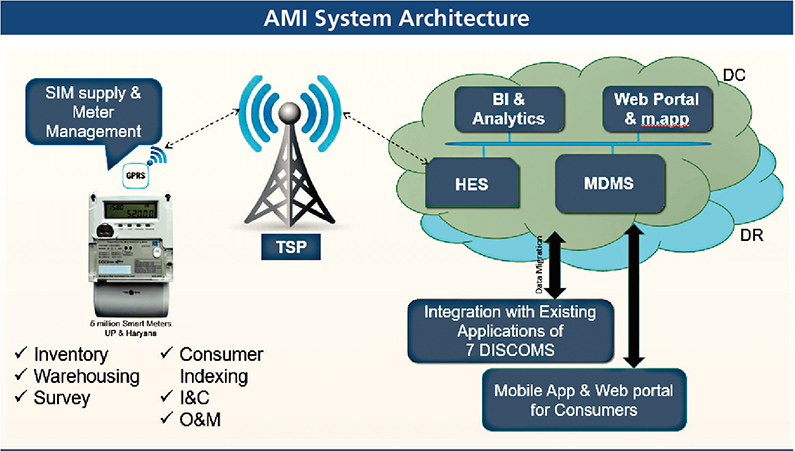
Driving automation
As the project was spread across 54 cities in 3 states, implementation was monitored online real time. A dedicated team led by U. Udhaya Kumar, Senior Manager, Digital, was quickly put together to develop a unique project monitoring application. “With just about 36 months in hand, we had a humongous task of developing a mobile app which tracks movement of 10 million meters, collecting data on the field, stores it in cloud, presents realtime dashboards to all stakeholders, facilitates multiple access points across mobile and desktop.” Overall, this was a comprehensive solutions architecture where the application was structured with the data flow. As there is a central repository of data that everyone could access, there was no duplication / corruption / loss of information. It was a reliable system where every bit of data stored was authentic, valid and safe.
“We identified the operational gaps and fixed them one by one such as the bar code-based tracking of old meters. The old meters had to be handed over to DISCOMS on a periodic basis,” elaborates Udhaya Kumar. The project involved handling 10 million meters, new and old, inventorying them and identifying the installed ones later for maintenance. When a field engineer removed old meters from across locations, there would have been no track of which meter belonged to which consumer and subsequently handing over to the DISCOMS would have been even more complex. “Hence a system was evolved wherein the old meters were barcoded (randomly generated), that was captured in the mobile app and linked to the consumers. When placing the new meters, the old meter barcode was entered to track the consumer location before installing the new meter to simplify the process,” highlights Krishna Kumar.

“We had a humongous task of developing a mobile app which tracks movement of 10 million meters, collecting data on the field, stores it in cloud, presents real-time dashboards to all stakeholders, facilitates multiple access points across mobile and desktop.”
U. Udhaya Kumar
Senior Manager, Digital
Further, the data from DISCOMS was scattered that increased the complexity in execution. To streamline the process, a common area wise identity was created with specific allocations with consumers in their respective areas that was available to all the field engineers in that area. The engineers were given a colour tag which had to be placed in consumer locations to indicate that a consumer had been attended and data verified. This was done in addition to the updation in the mobile application that avoided duplication and enabled complete utilization of field forces thereby improving productivity and reducing unnecessary travel.
SIM-Meter mapping
For seamless integration of meter with the HES & MDMS, uninterrupted communication is the key. The team faced initial challenges in meter and SIM IP mapping, however, a quick decision was taken to fix the SIMs at the vendors’ factory. A dedicated team was stationed at the meter manufacturer factory for installation, communication testing and mapping. The SIMs are QR coded to capture the SIM number automatically and mapped with meter numbers. For issues related to SIM, a centralised SIM and communication management portal was created to monitor the status of communication and SIM on-field activation “On the whole, we eliminated manual activities and rework as the mapping data was accessed through ‘L&T Consumer Indexing / Meter Installation’ portal,” highlights Udhaya Kumar.
Shrinking timelines
The AMI App comes with a range of benefits for the client as well as the end user, shares Pratik, Senior Engineer, Digital. “For the first time, people were empowered to efficiently manage power as the user-friendly application ensured higher reliability with information at fingertips to track and control energy usage. The earlier cumulative bill cycle of around 30 days was brought down to 10 days while the days spent in the process of advising meters was reduced from 26 days to just 6 days.” A radical shift in the meter registration process in the Head End System was achieved with installation productivity improving to 7 meters per day along with a billing efficiency of more than 90%.

“The O&M Department has centralized some of the significant initiatives such as integrated operation for project management, centralized technical expert cell for taking up data centres and network operation works by creating an expert talent pool across projects to work in virtual NOC concept.”
Dharmapal Sahadeo Wankhede
Head O&M
Forging bonds of trust
With Operations & Maintenance being an integral part of SW&C projects, nurturing a healthy relationship with the client is critical especially for additional leads, mentions Dharmapal Sahadeo Wankhede, Head O&M. “Add-on sales is one such lead and at SW&C, projects like Mumbai CCTV are testimony to this, while there are also projects where a model is shared to improve profitability of a single service partner when working on multiple jobs for the same client which is again value addition. From the execution point of view, the O&M Department has centralized some of the significant initiatives such as integrated operation for project management, centralized technical expert cell for taking up data centres and network operation works by creating an expert talent pool across projects to work in virtual NOC concept so that the dependency on OEM is reduced,” he adds.
Partnering excellence
By delivering a premium solutions architecture for the smart meter project, team SW&C has upped the ante, making it a win-win situation both for client and L&T while reinforcing the fact that operational excellence is all about successful project management and achieving customer satisfaction.